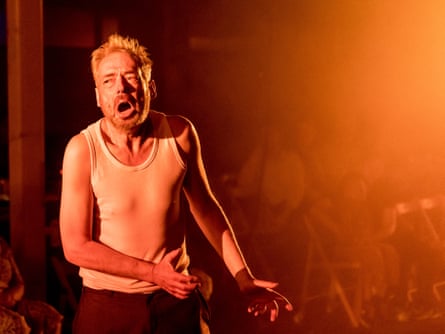Sailing by like a ghost ship on the horizon, the French composer Charles Gounod’s bicentenary has been a quiet affair so far. The BBC Proms has spurned him altogether: not a note this season according to the index, though were I controller I might have taken the same hard line, especially with another Gallic anniversary, that of Debussy, to deal with. Billowing with melody, eddying with pious excess, Gounod’s music is a habit not all can acquire, even if his biggest hit, Ave Maria, is irresistible: his own honeyed tune laid over, would you credit it, Bach’s Prelude No 1 in C major BWV 846 in gluttonous homage.
The Guardian’s product and service reviews are independent and are in no way influenced by any advertiser or commercial initiative. We will earn a commission from the retailer if you buy something through an affiliate link. Learn more.
An intrepid few have unearthed some Gounod rarities, including University College Opera, who in March gave the UK premiere of Polyeucte. (You’ll want to know that this was written when Gounod was living in a menage a trois in London.) Grange Park Opera has chosen instead one of his most popular, yet infrequently seen, operas, Roméo et Juliette. Shakespeare’s depiction of innocent love is doused in Gounod’s own curious mix of heady eroticism and French Catholic guilt. A sequence of delicious duets and ensembles puts the focus on the young couple, with a few powerful choruses – excellently sung at Grange Park – to remind us there’s a world at war out there. The opera ends with the couple’s double suicide, as they cry for absolution.
Mark Padmore, always a daring vocal performer, is here pushed to physical extremes
The company, now gracefully embedded in its new West Horsley home, has staged an elegant new production by Patrick Mason, designed by Francis O’Connor and conducted by Stephen Barlow. The look is a cool medley of fascist-deco and Little Italy and, perhaps in a nod to Bernstein’s centenary, a whiff of West Side Story Jets and Sharks. On the second night, the Ukrainian soprano Olena Tokar, ideal as Juliette, was steely-voiced in tackling the vocal fireworks, combining girlish impetuousness with a more mature sense of independence.
Her Roméo, the Korean tenor David Junghoon Kim, still has unevenness in his voice but at key moments finds all the necessary ardour and poetry. Among the ensemble cast, Clive Bayley stood out as Count Capulet, his brief appearances embodying a lifetime’s professionalism. Anna Grevelius was a fresh, appealing Stephano. The orchestra of English National Opera made the most of the filigree detail, with lovely solo work from lower strings and woodwind. Barlow lets the score breathe: you can’t pump false energy into these rippling melodies. If there’s any music in which “sit back and enjoy it” is for once allowable, bring on Gounod.
The composer Tansy Davies and her librettist, Nick Drake, have an ineluctable taste for the epic. Between Worlds (2015) was set in the twin towers on 9/11. A new London Sinfonietta/Royal Opera collaboration, Cave, embraces climate change and global disaster. A grief-stricken man has lost his daughter: details are vague but the loss is clear.
This chamber piece was staged (director Lucy Bailey) at the cavernous Printworks in Deptford, south London, better known as a 3,000 capacity nightclub. Conducted by Geoffrey Paterson, six Sinfonietta musicians were deft in communicating Davies’s sensuous, layered score, full of tender woodwind drones, plucked harp and elegiac strings, combined with vivid electronics by Sound Intermedia.

Photograph: Manuel Harlan
Above all, Cave is a showcase for the tenor Mark Padmore, always a daring vocal performer but here pushed to physical extremes, rolling half-naked in “mud”, playing with fire, being drenched by rain. The versatile, warm-voiced mezzo-soprano Elaine Mitchener was persuasive even when Drake’s terse, strong text suddenly lurched into eco-warrior mode. Not an easy evening, but full of strange powers.
The same could be said of Britten’s The Turn of the Screw, his invincible 1954 chamber opera based on Henry James’s novella. Psychic forces grip the Governess in charge of two children, who may or may not be in thrall to two ghosts. In this first Regent’s Park Open Air theatre/ENO venture, young singers from ENO’s Harewood Artists programme – Rhian Lois, William Morgan, Elgan Llyr Thomas – led a double cast (I heard the second), conducted with superb authority by ENO Mackerras fellow Toby Purser. The 13-strong chamber ensemble was impeccable. As the children Miles and Flora, Sholto McMillan and Ellie Bradbury were chillingly convincing. Sholto’s brilliant miming on a dummy keyboard (played for real by on-stage piano) was a tour de force, never mind the insolent purity of his treble voice.
The opera’s watertight construction cannot guarantee a good staging, but I can’t remember seeing one that failed. Timothy Sheader’s production, designed by Soutra Gilmour as a dilapidated conservatory in a once great house, may have said nothing new – the sexual undertones have been trawled before – but it was intelligent, cogent and, as the sky darkened, properly spooky. Even the parakeets were fretful.

Star ratings (out of 5):
Roméo et Juliette ★★★★
Cave ★★★
The Turn of the Screw ★★★★

Comments (…)
Sign in or create your Guardian account to join the discussion